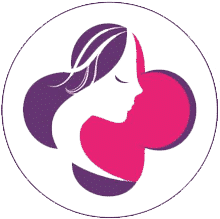Breast Feed
Breastfeeding Problem /Lactation Treatment
What is breastfeeding?
Breastfeeding is when you feed your baby breast milk, usually directly from your breast. It’s also called nursing. Breastfeeding is the “Gold standard” for infant feeding.
All the babies, regardless of the type of delivery, should be given early and exclusive breastfeeding up to 6 months of age. Exclusive breastfeeding means giving nothing orally other than colostrum or breast milk.
Why is breastfeeding important?
The rate of growth of the infants during the first 6 months of life is greater and faster than any other period of life. Their weight is doubled by the age of 5 months and tripled by the end of one year. Keeping this in mind, the baby should be nursed adequately which allows easy digestion and absorption. The advantages of breast milk are-
- Breast milk is an ideal food with easy digestion and low osmotic load.
- It contains carbohydrate which stimulates growth of intestinal flora, produces organic acids needed for synthesis of vitamin B
- Fat: Smaller fat globules, better emulsified and digested
- Protein: Rich in lactalbumin and lactoglobulin
- Protection against infection and deficiency states: Vitamin D promotes bone growth, protects the baby against rickets. Long-chain omega-3 fatty acids essential for neurological development 5. Immunoglobulins IgA (secretory), IgM, IgG protect against infection
- Supply of nutrients and vitamins.
- Breast milk is a readily available food to the newborn at body temperature and without any cost.
Why is breastfeeding important for mother?
- Breastfeeding acts as a natural contraception to the mother
- Breastfeeding burns extra calories, so it can help lose pregnancy weight
- It releases the hormone oxytocin, which helps the uterus return to its pre-pregnancysize and may reduce uterine bleeding after birth.
- Psychological beneft of mother-child bonding.
PREPARATIONS FOR BREASTFEEDING
- The preparations for breastfeeding is started from the middle of pregnancy.
- Any abnormality in the nipple, like cracked or depressed nipple is adequately treated.
- Massaging the breasts, expression of the colostrum and maintenance of cleanliness is carried out during the last four weeks of pregnancy.
When the first feed is given?
In the absence of anatomical or medical complications, a healthy baby is put to the breast immediately or at most 1/2–1 hour after a normal delivery. Following cesarean delivery a period of 4–6 hours may be sufficient for the mother to feed her baby.
What should be the frequency and duration of feed?
- During the frst 24 hours, the mother should feed the baby at an interval of 2–3 hours. Gradually, the regularity becomes established at 3–4 hours pattern by the end of frst week. Baby should be fed more on demand.
- The initial feeding should last for 5–10 minutes at each breast. Thereafter, the time spent is gradually increased. Baby should be fed from one breast completely and then put to another breast.
What’s the Best Position for Breastfeeding?
The best position is the one where mother and baby are both comfortable and relaxed, and mother doesn’t have to strain to hold the position or keep nursing. Here are some common positions for breastfeeding:
- Cradle position.
- Football position.
- Side-lying position.
- Cross-cradle hold.
- Laid-back position.



